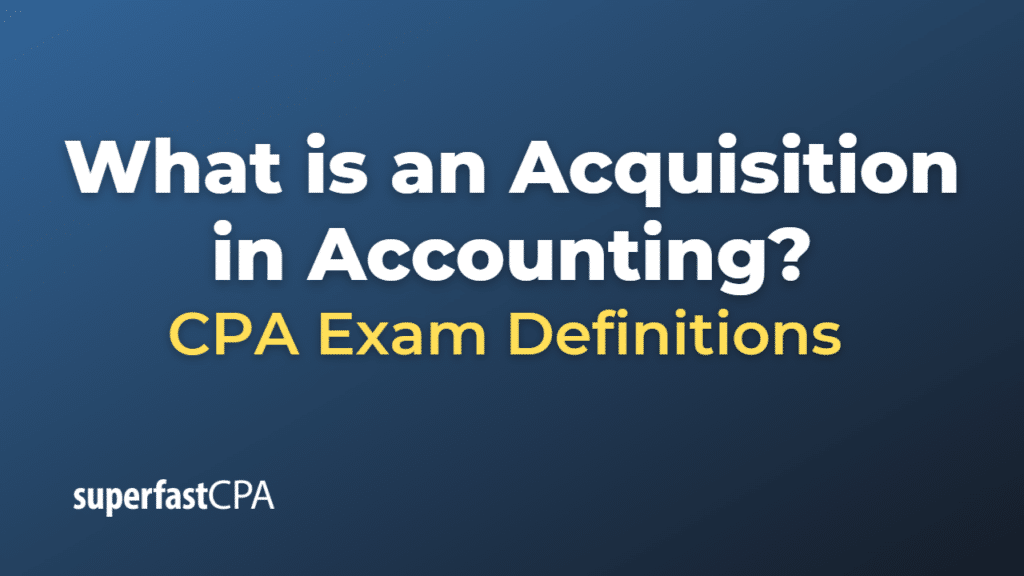Acquisition
An acquisition in accounting refers to a transaction in which one company (the acquirer) purchases another company (the acquiree or target company) with the intent to gain control of its operations, assets, and market share. Acquisitions are a common way for businesses to grow, diversify their product or service offerings, enter new markets, or acquire valuable resources, such as intellectual property or key talent.
In accounting, acquisitions are recorded and reported according to specific rules and regulations, such as the Generally Accepted Accounting Principles (GAAP) or International Financial Reporting Standards (IFRS). The acquisition process usually involves determining the fair value of the target company’s assets and liabilities, as well as any intangible assets and goodwill that may arise from the transaction. The acquirer’s financial statements will be adjusted to reflect the newly acquired assets, liabilities, and equity of the target company after the acquisition is complete.
Example of an Acquisition
Let’s assume Company A wants to acquire Company B to expand its market presence and product offerings. Here’s a simplified example of the acquisition process in accounting:
- Company A agrees to purchase Company B for $50 million in cash.
- Prior to the acquisition, Company A and Company B both have their own assets, liabilities, and equity.
Company A (before acquisition):
- Total Assets: $100 million
- Total Liabilities: $40 million
- Total Equity: $60 million
Company B (before acquisition):
- Total Assets: $30 million
- Total Liabilities: $10 million
- Total Equity: $20 million
- Company A and Company B must determine the fair value of Company B’s assets and liabilities. Suppose the fair value of Company B’s assets is found to be $35 million, and the fair value of its liabilities remains at $10 million.
- The acquisition price ($50 million) is greater than the net fair value of Company B’s identifiable assets and liabilities ($35 million – $10 million = $25 million). The difference of $25 million ($50 million – $25 million) is recorded as goodwill, an intangible asset, on Company A’s balance sheet.
- Company A’s financial statements are adjusted to reflect the acquired assets, liabilities, and goodwill:
Company A (after acquisition):
- Total Assets: $100 million (original) + $35 million (acquired assets) + $25 million (goodwill) = $160 million
- Total Liabilities: $40 million (original) + $10 million (acquired liabilities) = $50 million
- Total Equity: $60 million (original) + $50 million (acquisition price) – $10 million (acquired liabilities) = $100 million
After the acquisition, Company A’s balance sheet will show total assets of $160 million, total liabilities of $50 million, and total equity of $100 million.













